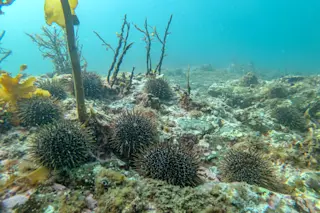This poison dart frog’s bright colors warn potential predators to avoid a deadly meal. Indeed, such bold markings are common to many poisonous or bad-tasting animals. But bright colors also attract predators, which raises an evolutionary conundrum: How did such ostentatious animals manage to survive and breed until predators could learn to avoid them? Some biologists have suggested that the ancestors of these bright advertisers of bad taste might have lived in groups, in which one relative could be sacrificed as a warning to spare an entire family. Rauno Alatalo and Johanna Mappes, evolutionary biologists at the University of Jyvaskyla in Finland, have recently provided some experimental support for this idea. The researchers presented artificial prey to birds called great tits: hollow stalks of rye filled with fat, some of which were mixed with bitter chloroquine. The tasty stalks were flagged with a piece of paper bearing an X, which ...
Hold the Frog
Discover how poison dart frog colors warn predators while raising an evolutionary conundrum for survival. Click to learn more!
More on Discover
Stay Curious
SubscribeTo The Magazine
Save up to 40% off the cover price when you subscribe to Discover magazine.
Subscribe













